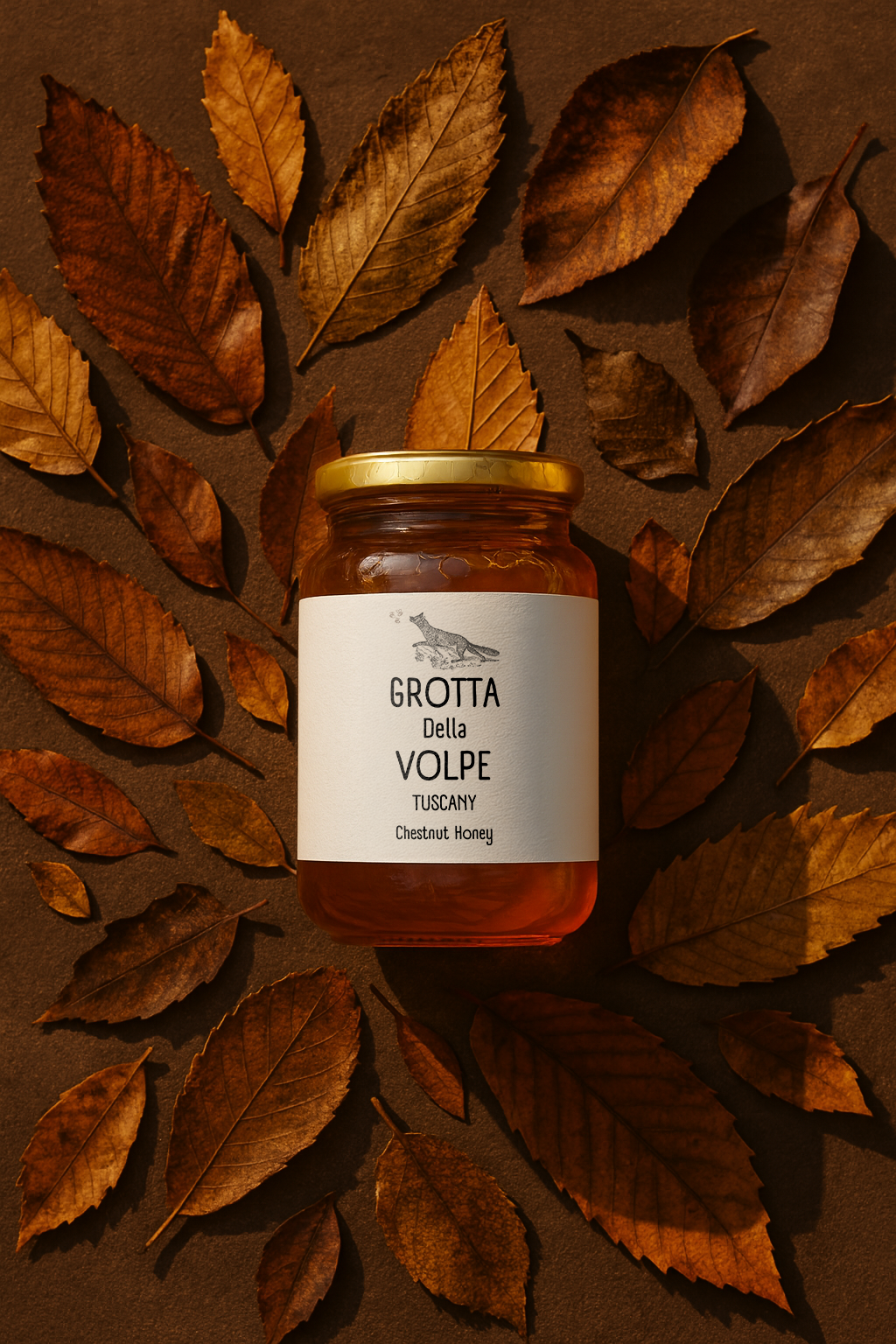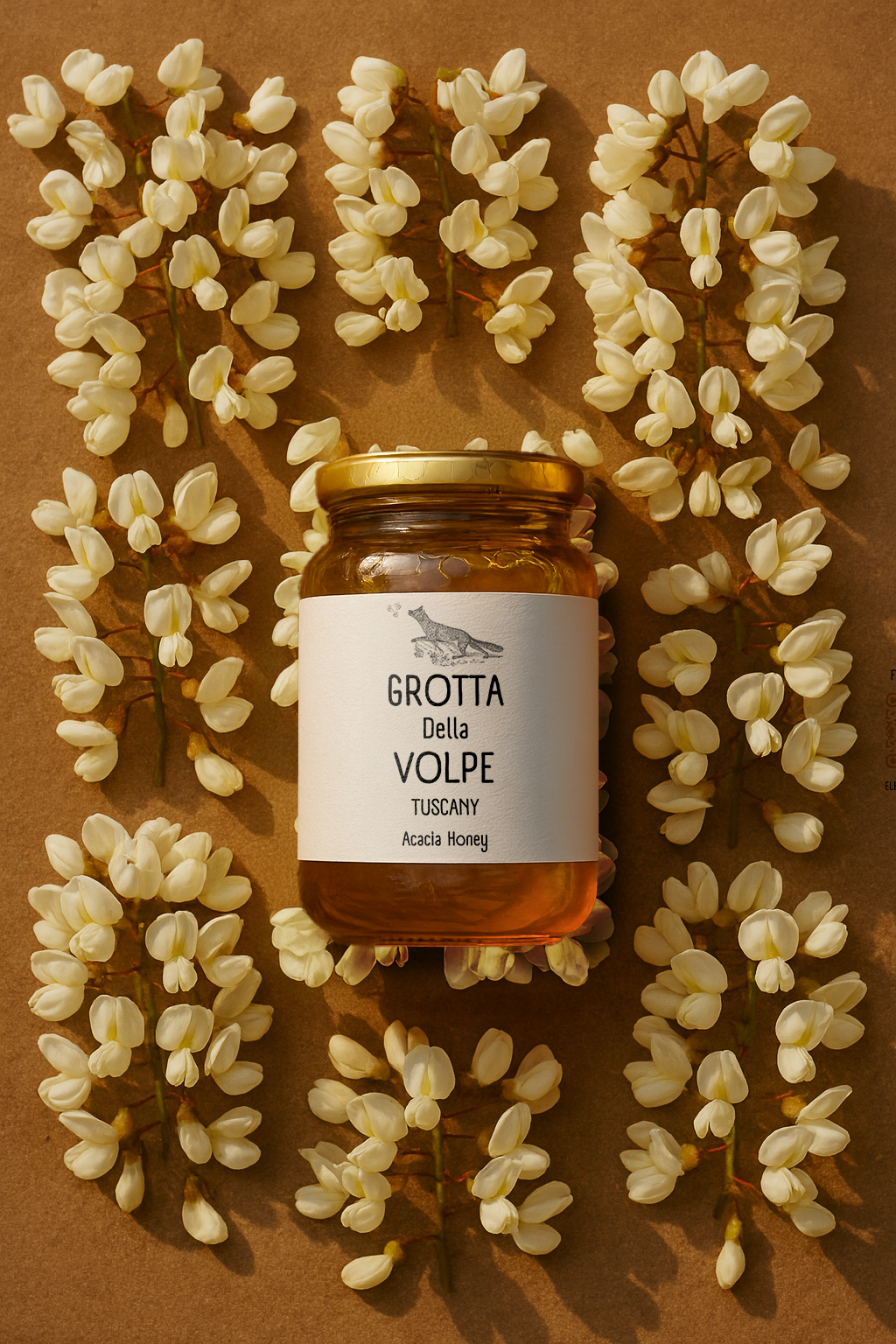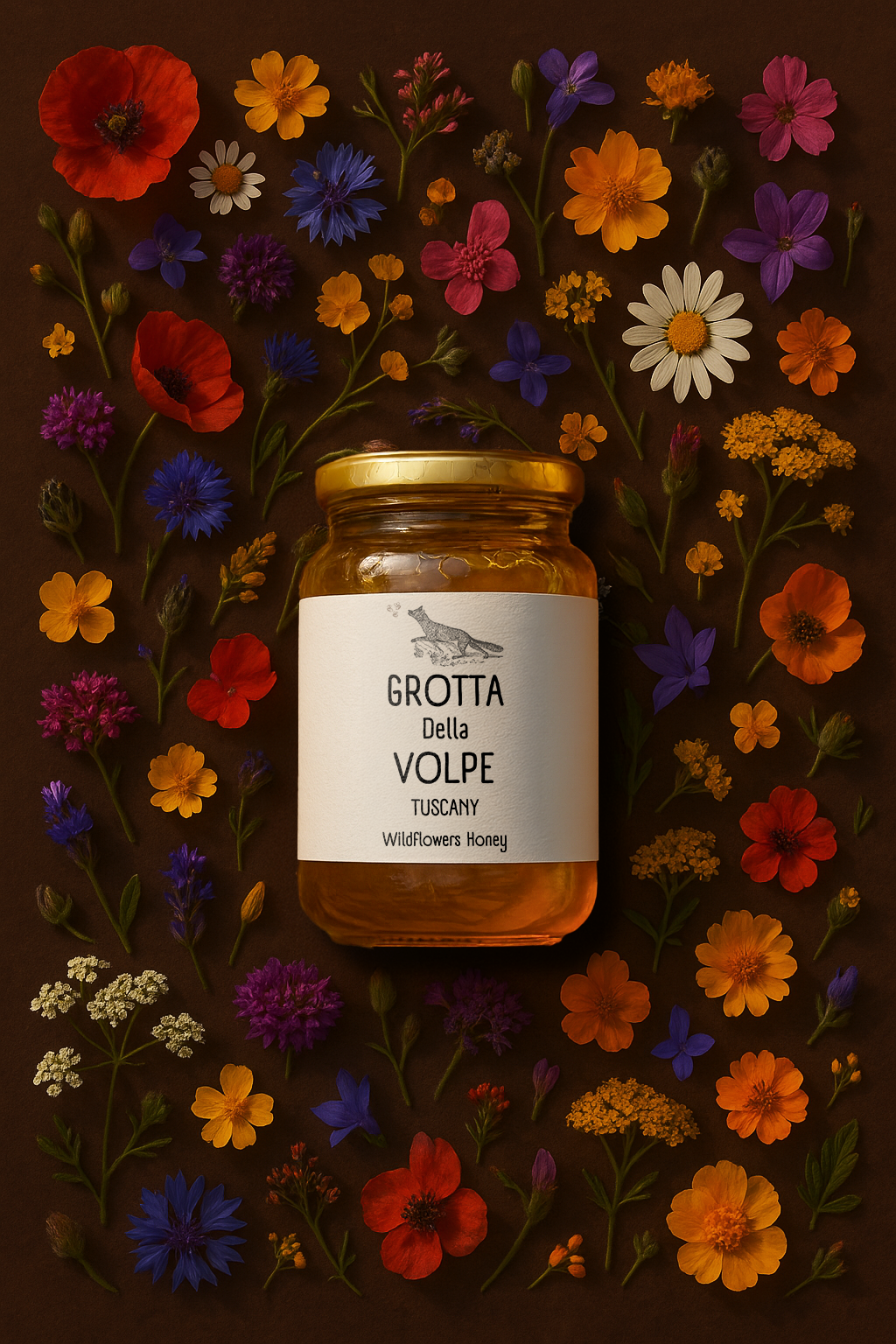Bees need to pollinate 2 million flowers to make 1 pound of honey, and 6 to 8 pound of honey to make 1 pound of wax.
Amid the forested hills of Il Nido Dei Venti, our bees gather nectar from chestnut blossoms, acacia and wildflower meadows to bring authentic character to our honey, reflecting the land. Harvested in Garfagnana by European honeybees (Apis mellifera), each jar blends the depth of chestnut, the sweetness of acacia, and the brightness of wildflowers. Within 100 kilometers of the hives, the bees also pollinate orchards and gardens, sustaining harvests and the estate’s natural balance. Raw, unpasteurized, and free of additives, this honey preserves its pure qualities — a quiet harmony of blossoms, bees, and landscape.












